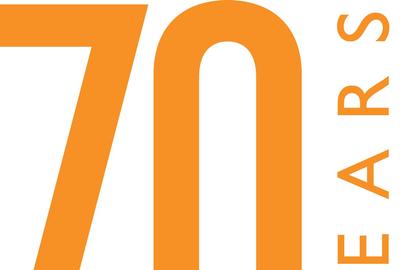‘Wallace Nutting: Preservation Pioneer’ Exhibition is a Centennial Celebration at the Webb-Deane-Stevens Museum
- WETHERSFIELD, Connecticut
- /
- August 21, 2016
Among the “ten commandments” Wallace Nutting distributed to workers building his line of furniture was the decree: ‘Let nothing leave your hands until you are proud of the work.” Nutting’s attention to detail and groundbreaking accomplishments in promoting American history and antiques are celebrated in the exhibition, “Wallace Nutting: Preservation Pioneer,” 100 years after Nutting opened the historic Joseph Webb House to the public for the first time. Held in collaboration with The Wallace Nutting Collector’s Club, the exhibition is made possible with financial support from Connecticut Humanities, and will run through October 30, 2016.
The Joseph Webb House is the heart of the Webb-Deane-Stevens Museum, in Wethersfield, Conn., and is best known as the home where General George Washington stayed for five nights in 1781 while he and French General Rochambeau planned the military campaign leading to the end of the Revolutionary War. When Nutting acquired the Webb House in 1916, he named it “Hospitality Hall,” making it part of his “Chain of Colonial Picture Houses” —historic sites in New England that were part of Nutting’s business plan to promote a nostalgic appreciation of “Old America.” From the beginning, Nutting intended to use the Webb House primarily as a backdrop for his colonial-style prints, which became ubiquitous in American homes in the early 20th century.
According to Charles T. Lyle, executive director of the Webb-Deane-Stevens Museum, and curator of the exhibit, “The sheer quantity of things Nutting did in his lifetime is remarkable.” Lyle explains that as an entrepreneur and businessman, the Nutting name stood for quality and was as influential in the early 20th century as Martha Stewart’s brand of “Living” is today. “But it goes beyond that,” Lyle says. “Wallace Nutting was a true pioneer in the emerging fields of historic preservation, and in the study and appreciation of American decorative arts and architecture.” Lyle explains that in addition to being a popular artist/photographer and manufacturer of quality reproduction furniture, Nutting was also a respected collector of American antiques, restorer of historic buildings, and a noted author and lecturer. “Nutting created an aesthetic that popularized the use of American antiques that people wanted to have in their own homes and could live with comfortably.”
Visitors to the “Wallace Nutting: Preservation Pioneer” exhibit will ultimately gain a better understanding of how the Colonial Revival has shaped our contemporary perceptions about colonial America. Lyle has acquired Nutting furniture, ironwork, wooden treenware and a number of hand-colored prints for the exhibit, with many of the items on loan from members of the Wallace Nutting Collector’s Club. Lyle has also recreated a scene in the Webb House that is depicted in one of Nutting’s most famous prints, “Birthday Flowers,” using a mannequin in reproduction 18th-century clothing, and other distinguishing details.
Nutting’s restoration of the Webb House in 1916 included a number of murals, many of which can be seen today due to restoration by the museum several years ago. Nutting had the center hall decorated with painted murals depicting romanticized views of European castles, but they were painted over in the 1920s and cannot be restored. The most prominent features of Nutting’s Webb House restoration that remain are the historic murals in the two front parlors. The southeast (“Yorktown”) parlor murals depict the famous council of war between George Washington and the comte de Rochambeau. Also portrayed is the British surrender at Yorktown. The northwest parlor murals capture noteworthy historic houses in imaginary landscapes, including several of the other “links” in his chain of houses. Other rooms in the Webb House were also used as stage sets for Nutting’s photographs.
Nutting opened the Webb House to the public on July 4, 1916, with a 25-cent admission charge. During the first two years of operation there were over 2,000 visitors. But Lyle notes that America’s entry into World War I, and the subsequent rationing of gas, seriously affected automobile touring. Nutting had no choice but to close the house and he sold it to the Connecticut Society of Colonial Dames in 1919. It has remained in their care ever since. In 1925, Nutting sold his furniture collection to J. Pierpont Morgan, Jr., who donated it to the Wadsworth Atheneum in Hartford. As a result, today the Atheneum claims the most important collection of “Pilgrim Century” furniture in the nation.
A related presentation by noted Nutting author, antiques dealer, and auctioneer, Michael Ivankovich will be held on September 22, at 6:00 p.m. The Wallace Nutting Collectors Club Annual Conference, including a public auction, will be held in Wethersfield on September 23 and 24. For details see: http://wallacenutting.org/convention.html.
Located in the heart of Connecticut’s largest historic district, the Webb-Deane-Stevens Museum consists of three authentically restored 18th-century homes and provides the quintessential New England experience – from the American Revolution to the early 20th century. Tours include the 1752 Joseph Webb House, where General George Washington met with French General Rochambeau, and planned the military campaign leading to the end of the Revolutionary War, the 1770 Silas Deane House, built for America’s first diplomat to France, and the 1788 Isaac Stevens House – depicting life in the 18th and 19th centuries through original family objects and a fascinating children’s exhibit. For rates and hours visit www.webb-deane-stevens.org or call (860) 529-0612, ext. 12.

270x400_c.jpg)














![Peter Paul Rubens (Flemish, 1577–1640), After Titian (Tiziano Vecelli) (Italian [Venetian], c. 1488–1576), Rape of Europa, 1628–29. Oil on canvas, 71 7/8 x 79 3/8 in. Peter Paul Rubens (Flemish, 1577–1640), After Titian (Tiziano Vecelli) (Italian [Venetian], c. 1488–1576), Rape of Europa, 1628–29. Oil on canvas, 71 7/8 x 79 3/8 in.](/images/c/e2/2e/Jan20_Rape_of_Europa100x100_c.jpg)







